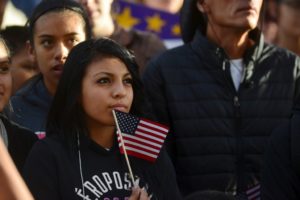
A few key statistics make it clear: The political power of the Latino electorate is big, and it’s only going to get bigger.
In the 1996 presidential election, 4.7 percent of voters were Latino, in 2016, 9.2 percent. Latinos are the nation’s youngest ethnic group with a median age of 27 years, more than a decade younger than non-Latinos at 42 years.
Minorities 10 and under now outnumber Caucasians 10 and under. It’s the first truly majority minority generation — what a Brookings analysis labeled “Generation Z-Plus.”
Twenty-six percent of the group is Latinos, there are far fewer Black, Asian and mixed race Americans. That means Latinos will account for 40 percent of growth in eligible voters by 2030, according to Pew Hispanic Center projections.
The numbers matter because Latinos have long leaned hard toward the Democratic Party, at times by more than a two-to-one ratio. An example of this: the difference between Hillary Clinton and Donald Trump in 2016 with a 66 percent vs. 28 percent.
And politicians who assume that the most important political issue for Latinos is immigration are likely to be surprised. In 2017, education was a top item of concern for 73 percent of those polled; 69 percent said defending the country from future terrorist attacks was also a top issue, and 66 percent said strengthening the economy was also on their mind.
Democrats have maintained a big edge. But Latinos will soon account for 40 million votes; that’s a big opportunity, and concern, for both parties.

Recent Comments